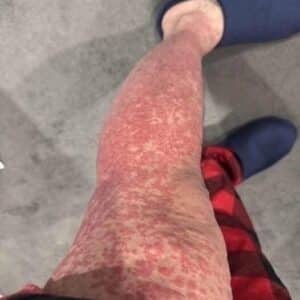The American cockroach (Periplaneta americana) is one of the most widespread, adaptable, and notorious cockroach species in the world. Recognized for its size, speed, and resilience, this pest has become a persistent challenge for homeowners, businesses, and urban environments alike. Whether you’ve spotted one darting across your kitchen floor or lurking in a basement corner, knowing more about these insects can help you prevent and control an infestation effectively.
Physical Characteristics
American cockroaches are among the largest cockroach species, typically measuring between 3 to 5 centimeters in length. Their elongated, oval-shaped bodies are a reddish-brown color, complemented by a pale yellow or tan figure-eight marking on the back of their heads—a distinct feature that helps in quick identification. Adults have long antennae and fully developed wings, which they can use for short flights in warm conditions.
While they may seem almost indestructible, their lifespan is usually about a year—though under favorable conditions with steady food, warmth, and moisture, some can live even longer.
Habitat & Behavior
The American cockroach thrives in warm, humid environments, making sewers, boiler rooms, basements, and commercial kitchens ideal habitats. Outdoors, they often shelter in mulch piles, compost bins, decaying logs, woodpiles, and hollow trees. Their preference for damp areas is linked to their need for moisture to survive.
They are nocturnal by nature, staying hidden during the day in dark crevices or behind appliances, and emerging at night in search of food and water. When startled, these insects can scuttle away at remarkable speeds—quick enough to disappear from sight in seconds. This speed, combined with their ability to flatten their bodies and squeeze through tiny cracks, makes them particularly hard to catch or eliminate without a strategic approach.
Why They’re a Problem
-
Health Risks & Allergies
American cockroaches are not just unsightly—they’re a genuine health concern. Their droppings, saliva, and shed skins contain allergens that can trigger asthma and allergic reactions, especially in children and sensitive individuals. More alarmingly, they can carry and spread harmful pathogens, including bacteria, viruses, and parasites. As they crawl over food prep areas, dishes, or pantry items, they may transmit diseases such as salmonella, dysentery, and gastroenteritis. -
Potential Property Damage
While they’re not as destructive as termites, American cockroaches are opportunistic feeders. They may nibble on paper products, cardboard, book bindings, and fabrics, leaving behind small chew marks and staining from droppings. -
Psychological Impact
Even a single sighting can be unsettling. For many, a roach in the home can cause feelings of discomfort, embarrassment, and anxiety—especially if guests or customers encounter them in a commercial space.
Prevention & Control Strategies
Because American cockroaches are hardy survivors, prevention is key:
-
Sanitation First: Keep kitchens, bathrooms, and storage areas clean. Wipe up crumbs and spills promptly, wash dishes daily, and empty garbage regularly into sealed bins.
-
Eliminate Moisture: Fix leaky faucets and pipes, improve ventilation in damp spaces, and use dehumidifiers where needed.
-
Block Entry Points: Seal cracks, gaps, and holes with caulk or steel wool. Pay special attention to spaces around plumbing, vents, and baseboards.
-
Monitor & Act Early: Watch for droppings, shed skins, and egg cases. Early detection allows for quicker, more effective control.
-
Professional Treatment: In cases of recurring or severe infestations, licensed pest control experts can apply targeted insecticides and set up integrated pest management plans for long-term results.
Final Thoughts
The American cockroach’s adaptability is what makes it such a persistent pest. By learning to recognize their habits and vulnerabilities, you can significantly reduce your chances of an infestation. Staying proactive—through cleanliness, moisture control, and sealing entry points—remains the most effective defense.
If you notice signs of these pests in your home or workplace, take immediate action. Quick intervention not only protects your health and property but also saves you from the stress of a full-blown infestation. In the battle against the American cockroach, prevention is always better than cure.





